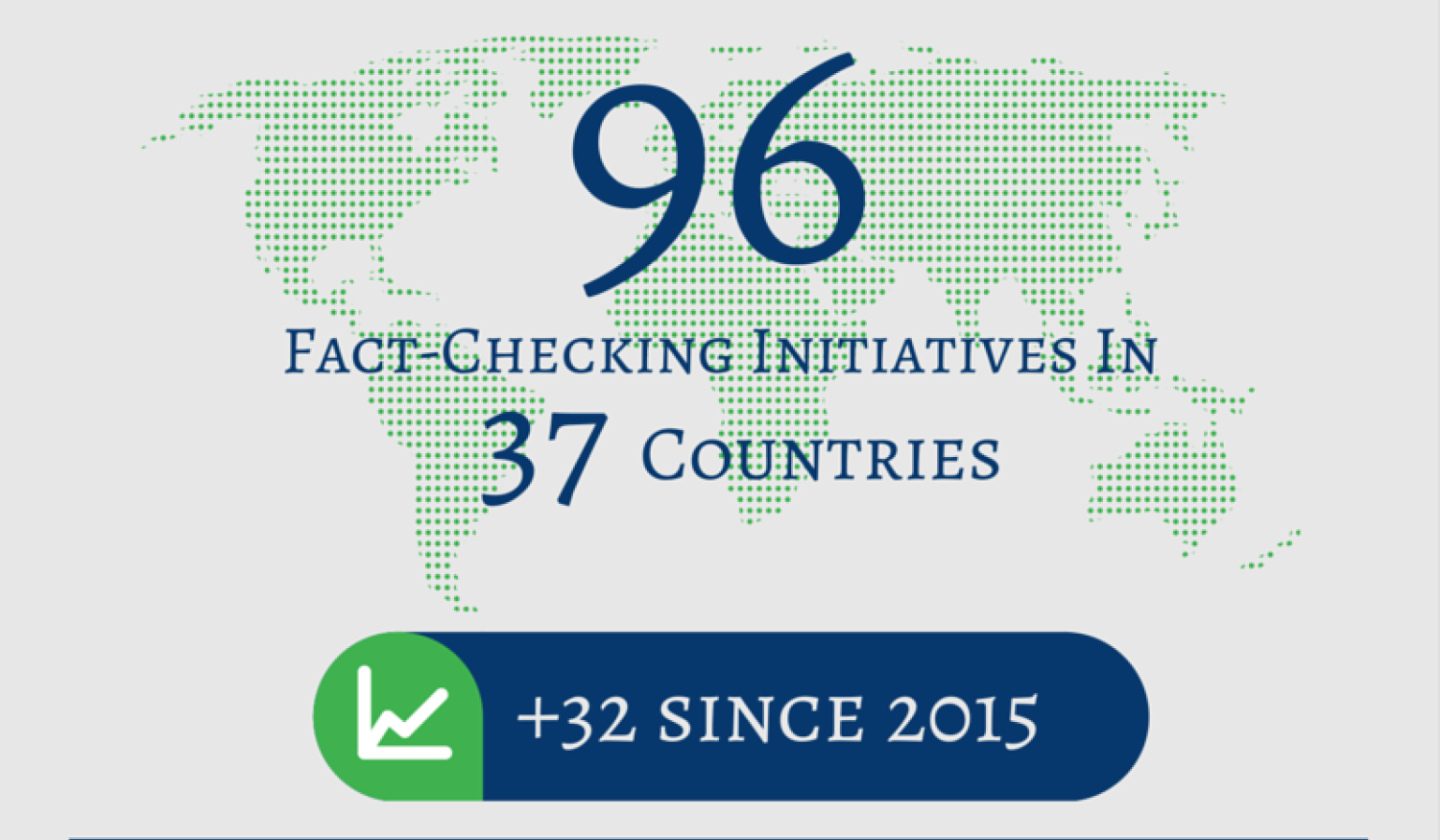The latest census of fact-checking and promise-tracking initiatives shows 96 such projects currently operating in 37 countries (highlighted in green below). This is a 50 percent increase compared to the 2015 census.
The census, conducted by the Duke Reporters’ Lab, indicates that these projects have been successful in very different conditions worldwide. The political context that fact-checkers in Iran deal with is more fraught than the one in Spain; public data is far more accessible in the United Kingdom than it is in South Africa.
Language barriers aside, fact-checking has become sufficiently popular that readers around the world would recognize the format wherever they saw it, regardless of whether it came from Peru’s Ojo Bionico or Italy’s Pagella Politica.

Countries with at least one fact-checking initiative are highlighted in green. Updated to include Senegal, which was added after the census. (Data from DRL database)
Some of the increase measured by the Duke Reporters’ Lab is the result of existing initiatives being discovered rather than new ones launching. The 2016 presidential election in the United States has also led to a burst of new fact-checking operations.
Despite those caveats, there remains a tangible phenomenon behind these numbers.
Fatigue of “he said/she said” reporting, disappointment with grossly inaccurate news and disenchantment with politicians of all stripes fuel reader demand for this form of journalism around the globe.
Outside the United States, a majority of fact-checking organizations are not affiliated with an established news organization. These fact-checkers are usually an expression of organized civil society and their distance from established media outlets is a part of their appeal to jaded readers.
Lessons from the census
America’s numerical and chronological pre-eminence in the database should not distract from the innovation that is occurring outside the country, especially in terms of making fact-checking more engaging and relevant to readers. U.S. fact-checkers should be emulating best practices from fact-checkers around the world just as the latter largely adopted the fact-checking model from American precursors.
Fact-checkers in Argentina, Brazil and Mexico are leaders in terms of visualizing and sharing their work in a way that entices readers to consult it.
France’s fact-checkers taught the world a lesson in the aftermath of the Paris attacks as they debunked viral fakes (almost) as rapidly as they were being shared.
Fact-checkers on television in Spain and Australia are producing entertaining and recognizable formats that reach wide audiences.
The other lesson from the census is about endurance. Fact-checking tends to boom during big election campaigns (take the most recent case of Ireland) but lose some traction thereafter.
This and other challenges that go beyond the ones journalism as a whole is facing mean that fact-checking initiatives have a relatively high mortality rate: 17 fact-checking projects that launched in 2014 and 2015 have already shut down, according to the census.
Reached by email, Mark Stencel of the Duke Reporters’ Lab points at numbers that show encouraging longevity among some organizations: “There are 19 fact-checkers, from Buenos Aires to Belgrade — a fifth of the projects in our database — that have been at it for more than five years. That ought to tell us that there’s still an audience for fact-checking after the voters go to the polls.”
The challenges ahead for fact-checkers worldwide
In light of the continued expansion of fact-checking that the census has documented, three key questions lay ahead for the movement worldwide:
- How can fact-checkers maintain their appeal to readers in the long run? What forms of institutional transparency and best practices should they adopt to avoid disappointing readers in ways that other forms of political journalism have? More specifically, how should they measure and share the impact fact-checking has on politicians, readers and other media?
- How can fact-checkers keep funding flowing to this form of journalism and translate what is often short-term support from donors or clients into long-term buy-in?
- How do we use technology to accelerate the workflow of fact-checkers and ensure that small teams can still have a large effect?
How effective fact-checkers will be in responding to these three challenges in the years ahead will to a large extent determine how many more initiatives the census will be tallying up in the years ahead.
Note:
Correction: The map in an earlier version of this article left out South Korea among the countries highlighted. In sorting the list of countries with active fact-checking initiatives I had included the U.K. twice and thus not noticed the overall number was wrong. Apologies to Korean fact-checkers and thanks to @Farhadist for spotting the mistake (at least it was a fellow fact-checker).





